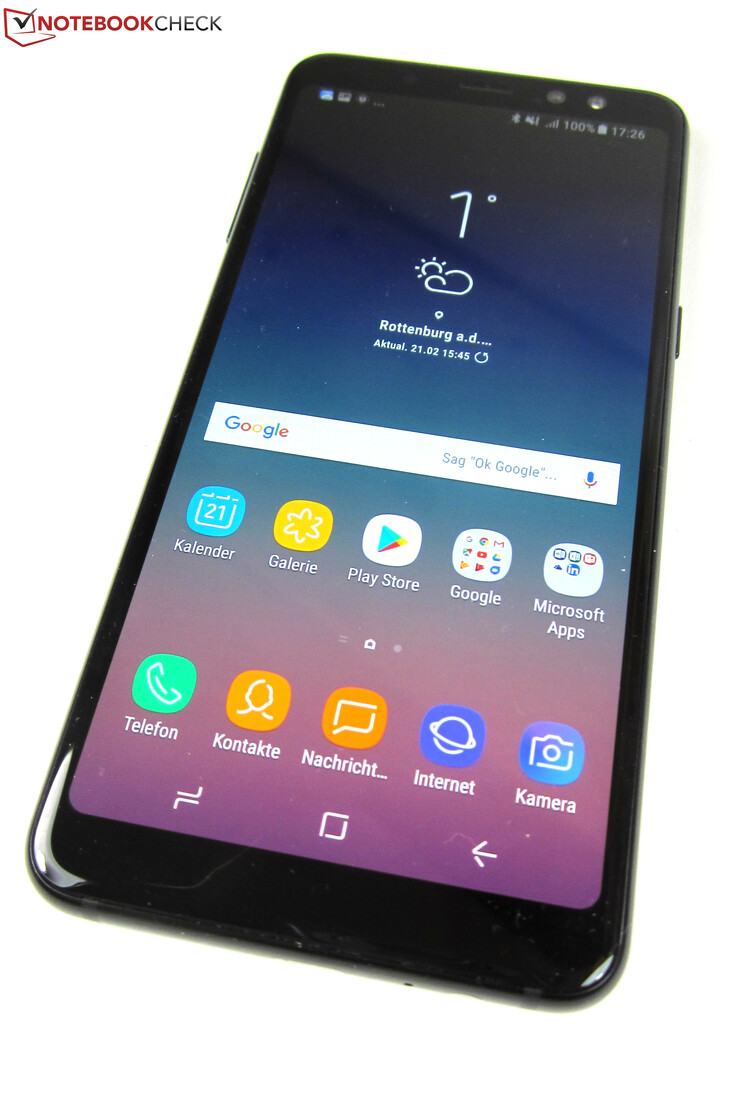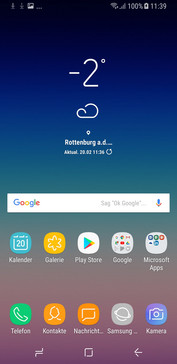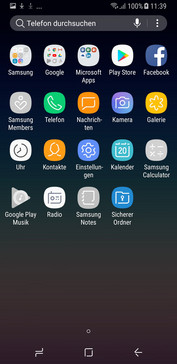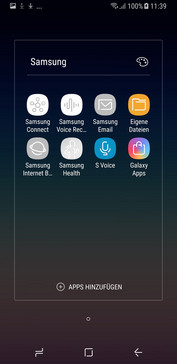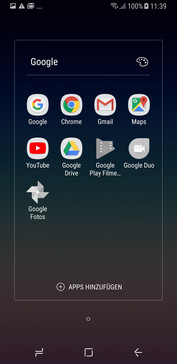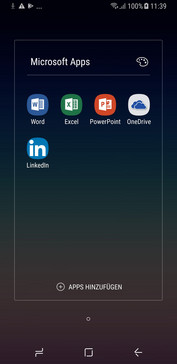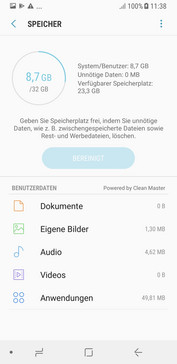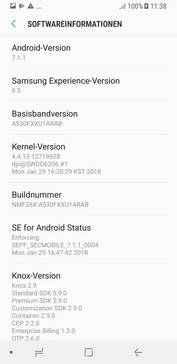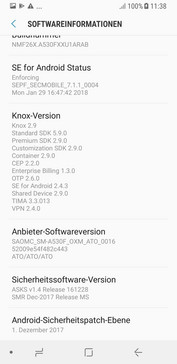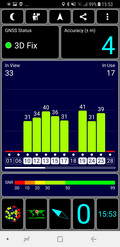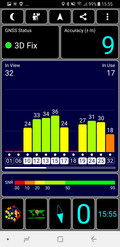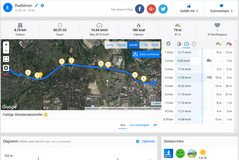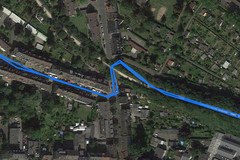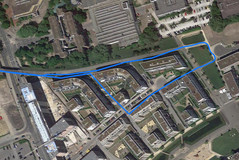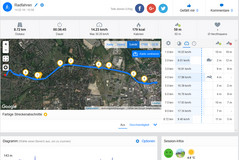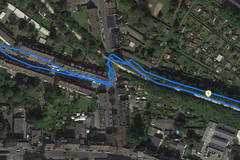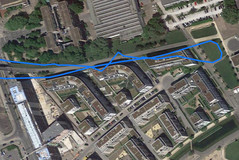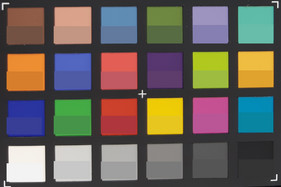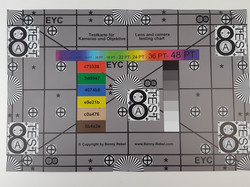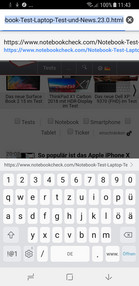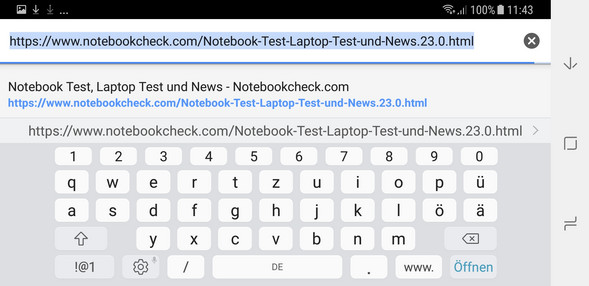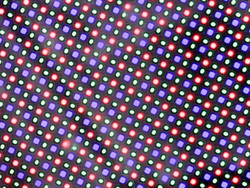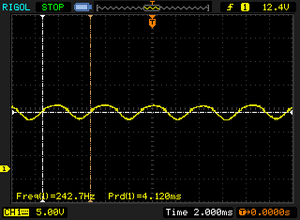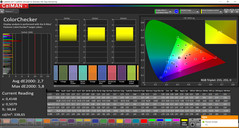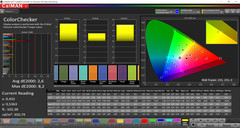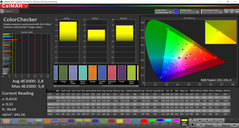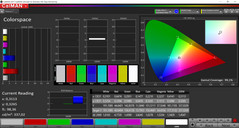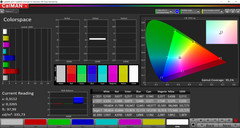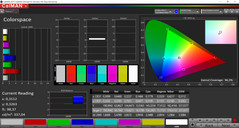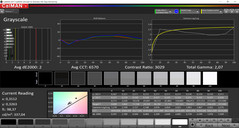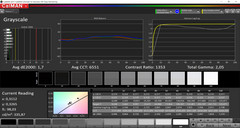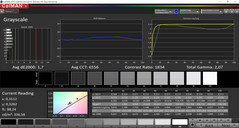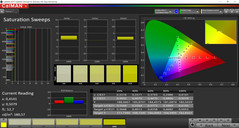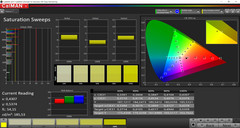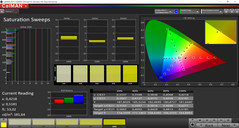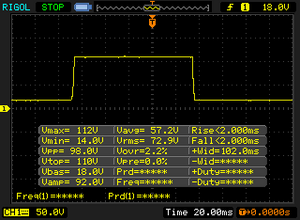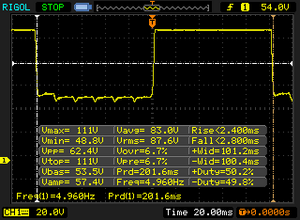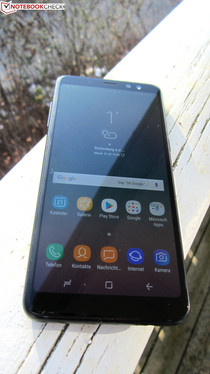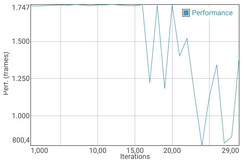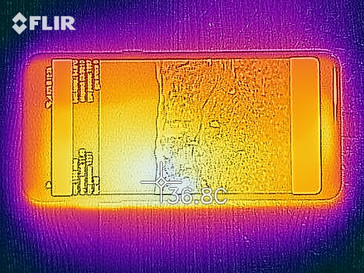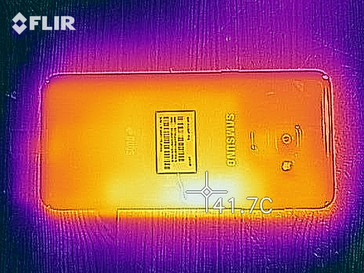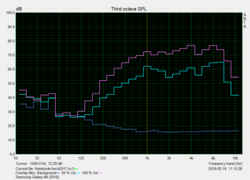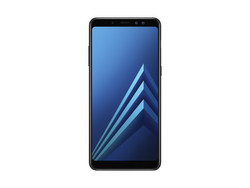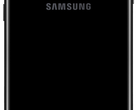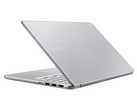Samsung Galaxy A8 2018 Smartphone Review

Samsung counts differently: The Galaxy A8 (2018) is Samsung's successor to the Galaxy A5 (2017), equating the same number across its different smartphone classes. While the Galaxy S8 and S8+ are high-end smartphones, the 5.6-inch Galaxy A8 (2018) sits within the highly competitive mid-range. Samsung has paired the Galaxy A8 (2018) with the Galaxy A8 + (2018), which has a 6-inch Super AMOLED display.
Both Galaxy A8's share the same solid set of features. They are powered by Samsung's brand new Exynos 7885 SoC, an ARM Mali-G71 MP2 GPU and 4 GB of RAM. Likewise, there is a 16 MP main camera, dual 8 MP + 16 MP front-facing cameras, LTE Cat. 11, USB Type-C, Wi-Fi 802.11 ac, and Bluetooth 5.0. There is even a dual-SIM variant.
During this review we will be testing the smaller Galaxy A8 (2018), which has a €499 (~$615) recommended retail price. This price places the Galaxy A8 (2018) among competitive rivals. We will be comparing the Galaxy A8 (2018) against the Asus ZenFone ZE554KL, the BQ Aquaris X Pro, the Honor 9, the OnePlus 5T, and the Sony Xperia XZ1.
Case
Like Samsung's more premium S series, the Galaxy A8 (2018) has rounded edges. This aesthetic gives the Galaxy A8 (2018) the impression of having a borderless screen with the display seemingly merging into the case. Samsung has called this Infinity Display.
The design only echoes that found in the arguably more stylish Galaxy S8 and S8+though. While the Galaxy A8 (2018) inherits the glass back from its more premium sibling, the edges of the device taper more gradually. The display and rear glass are covered by Gorilla Glass 5 and held together within a metal frame. The 8.4 mm (~0.33 in) case is extremely robust, to the extent that we could not bend or twist it. The device is available in Black, Orchid Gray, Gold, and Blue.
The high screen-to-body ratio has forced Samsung to move the fingerprint sensor to the back of the device, slightly recessing it underneath the main camera. The Dual-SIM variant has a nano-SIM and microSD card slot at the top of the device, with the other nano-SIM slot located on the left-hand side. The Galaxy A8 (2018) is IP68 certified, meaning that it is both dust and waterproof. Samsung details that the device is only waterproof up to 1.5 meters (~4.9 ft) for up to thirty minutes, which corresponds with IP67.
Connectivity
Samsung offers the Galaxy A8 (2018) in multiple configurations, with every variant powered by the Exynos 7885, and 4 GB of RAM. Aside from the choice of colours, there are 32 and 64 GB variants, and the choice of single or dual nano-SIM variants.
Our test device is the dual-SIM variant with 32 GB of internal storage, of which 23 GB is free. MicroSD card expansion can increase internal storage by up to 256 GB with it being possible to move both media files and apps to expandable storage.
The Galaxy A8 (2018) has a USB-C port that supports 2.0 speeds, fast charging, and USB OTG. Audio is handled by a 3.5 mm jack that is located next to the USB-C port.
Software
The Galaxy A8 (2018) runs Android Nougat 7.1.1 and version 8.5 of Samsung's UI, also found on the Galaxy Note 8 and Galaxy S8. There is a selection of Samsung apps preinstalled along with apps from Google, Facebook and Microsoft. These can only be disabled; none of them can be uninstalled.
Samsung has not confirmed whether or when the Galaxy A8 (2018) will be updated to Android Oreo 8.0, despite internet speculation that it will be. At the time of writing, the Galaxy A8 (2018) is shipped with a relatively recent Android security patch dated December 1st 2017.
Communication and GPS
The Galaxy A8 (2018) supports 802.11 a/b/g/n/ac, which means that it can connect to both 2.4 GHz and 5 GHz Wi-Fi networks. Consequently, we found that transmission speeds are fast, with the Galaxy A8 (2018) achieving 269 MBit/s send and 280 MBit/s receive speeds with our reference Linksys EA8500 router. Equally, the Galaxy A8 (2018) supports LTE Cat. 11, with download and upload speeds of up to 600 Mbps and 50 Mbps respectively. NFC and Bluetooth 5.0 are included, the latter of which will be supported by Android Oreo 8.0 onwards. Android Nougat 7.1.1. supports only up to Bluetooth 4.2.
| Networking | |
| iperf3 transmit AX12 | |
| OnePlus 5T | |
| Sony Xperia XZ1 | |
| Asus ZenFone 4 ZE554KL | |
| Samsung Galaxy A8 2018 | |
| BQ Aquaris X Pro | |
| Honor 9 | |
| iperf3 receive AX12 | |
| Sony Xperia XZ1 | |
| OnePlus 5T | |
| Asus ZenFone 4 ZE554KL | |
| Honor 9 | |
| Samsung Galaxy A8 2018 | |
| BQ Aquaris X Pro | |
GPS, GLONASS and BeiDou determine location. This helps the Galaxy A8 (2018) achieve a relatively precise location accuracy of up to four meters (~13 ft) outside and nine meters (~29.5 ft) inside. On our test bike ride, in which we compared the Galaxy A8 (2018)'s location accuracy against a Garmin Edge 500, we often found that the mid-range smartphone plotted a better route than the professional device. Ultimately, the Galaxy A8 (2018) only calculated that we had travelled fifty meters (~164 ft) more over nearly 9 km (~5.6 mi) than the Garmin Edge 500. Hence, the Galaxy A8 (2018) should be accurate enough for most people's needs.
Telephone and Call quality
The Galaxy A8 (2018) is available in either single or dual SIM variants, the latter of which Samsung refers to as the Galaxy A8 (2018) Duos. The Duos variant has dedicated slots for two nano-SIMs and a microSD card. When both SIMs are activated calls, messages, and data services can be assigned to a specific SIM card.
Our tests reveal that the device has good voice quality with voices remaining understandable on hands-free provided that the ambient noise is not too loud.
Cameras
The Galaxy A8 (2018) has a dual-camera. Surprisingly though, it is found on the front, with the main rear-camera having a single sensor. This dual front-facing camera array brings a considerable arsenal for selfies.
The front-facing array has 16 MP and 8 MP sensors, allowing for varying focal lengths and bokeh effects. There are many filters, such as beauty effects or stickers. Picture and video quality is adequate, with both the front and rear cameras able to record video up to 1080p and 30 FPS.
Although equipped with only one sensor, the 16 MP main camera has plenty up its sleeve. The f 1.7 lens, 1.12µm pixel size, and 1/2.8" sensor give the Galaxy A8 (2018) good low-light performance, while phase detection autofocus provides fast focusing.
The daylight shots in scenes one and two show that the main camera captures fine details with the sharpness of the focus enhancing the vibrant color scheme. While the Galaxy A8 (2018) cannot match the level of detail captured by the ASUS ZenFone 4, it performs better in low-light than the ZenFone 4 and the OnePlus 5T.
We then tested the camera under simulated lightning conditions, during which we checked the color image with the X-Rite ColorChecker Passport and image sharpness with our test chart.
Our tests show that colors and grayscale are oversaturated. While this does not look realistic, the oversaturation makes photos more vivid. Sharpness is good and decreases only at the edges of the test charts.
Accessories and Warranty
Samsung includes a modular power supply, a USB Type-A to Type-C cable, headphones, a SIM tool, and a quick start guide in the box. There are currently no official accessories listed on Samsung's website.
The Galaxy A8 (2018) comes with a twenty-four month warranty. Samsung shortens this to twelve months for the battery, further decreasing this to six months for parts that are more easily worn such as headphones and the power supply. Regardless, the two-year retailer’s warranty still applies. Please see our Guarantees, Return Policies and Warranties FAQ for country-specific information.
Input devices and Operation
Samsung has preinstalled its own keyboard as the default; we particularly like its clear structure and the numerous functions and settings that are available. The Galaxy A8 (2018) also has accessibility features such as high-contrast fonts, dictation, and a flashlight notification notifying you of incoming messages or alarms. There is a 'simple mode' for smartphone beginners that applies a simpler layout and larger controls. A nice extra feature is the multi-window mode, which can display several apps simultaneously.
There are three physical buttons: the volume rocker on the left-hand side, the power button on the right-hand side, and the fingerprint sensor on the rear, which sits below the main-camera. The Galaxy A8 (2018) uses capacitive buttons for navigation, while the display has ten finger multi touch that is sensitive and worked without delay during our tests.
Display
The Galaxy A8 (2018) has a 5.6-inch Super AMOLED display with a resolution of 2,220x1,080, and a pixel density of 441 PPI. The display has an 18.5:9 aspect ratio thanks to its narrow bezels. The display achieves a brightness of 589 cd/m² with the ambient light sensor switched, which reduces to 347 cd/m² in manual mode. The display was brighter still in the APL50 test, which simulates an even distribution of light and dark areas, reaching up to 684 cd/m². On average, the display achieved 538.3 cd/m², which should be bright enough for use in every situation.
The OLED display is 96 percent evenly lit and theoretically has an infinite contrast ratio; pixels can be individually turned off, producing total blacks.
Unfortunately, as with most OLED panels, the Galaxy A8 (2018) uses pulse width modulation (PWM) to control brightness. We measured PWM flicker at 242.7 Hz, which while being relatively low is still likely to be noticed by those with sensitive eyes after prolonged use.
| |||||||||||||||||||||||||
Brightness Distribution: 96 %
Center on Battery: 541 cd/m²
Contrast: ∞:1 (Black: 0 cd/m²)
ΔE ColorChecker Calman: 5.8 | ∀{0.5-29.43 Ø4.77}
ΔE Greyscale Calman: 2.7 | ∀{0.09-98 Ø5}
Gamma: 2.07
CCT: 6570 K
| Samsung Galaxy A8 2018 Super AMOLED, 2220x1080, 5.6" | Asus ZenFone 4 ZE554KL IPS, 1920x1080, 5.5" | BQ Aquaris X Pro IPS, 1920x1080, 5.2" | Honor 9 IPS/LTPS, 1920x1080, 5.2" | OnePlus 5T AMOLED, 2160x1080, 6" | Sony Xperia XZ1 IPS, 1920x1080, 5.2" | |
|---|---|---|---|---|---|---|
| Screen | -10% | -69% | 1% | 5% | 2% | |
| Brightness middle (cd/m²) | 541 | 656 21% | 458 -15% | 550 2% | 425 -21% | 620 15% |
| Brightness (cd/m²) | 538 | 634 18% | 473 -12% | 535 -1% | 423 -21% | 610 13% |
| Brightness Distribution (%) | 96 | 93 -3% | 88 -8% | 92 -4% | 92 -4% | 93 -3% |
| Black Level * (cd/m²) | 0.4 | 0.51 | 0.42 | 0.79 | ||
| Colorchecker dE 2000 * | 5.8 | 5.3 9% | 7.1 -22% | 3.3 43% | 2.1 64% | 4.2 28% |
| Greyscale dE 2000 * | 2.7 | 5.2 -93% | 10.5 -289% | 3.6 -33% | 2.5 7% | 3.9 -44% |
| Gamma | 2.07 106% | 2.22 99% | 2.28 96% | 2.38 92% | 2.32 95% | 2.02 109% |
| CCT | 6570 99% | 7905 82% | 8951 73% | 7226 90% | 6455 101% | 7086 92% |
| Contrast (:1) | 1640 | 898 | 1310 | 785 | ||
| Colorchecker dE 2000 max. * | 7.8 | 14.5 | 4.5 | 3.4 | 5.8 |
* ... smaller is better
Screen Flickering / PWM (Pulse-Width Modulation)
| Screen flickering / PWM detected | 242.7 Hz | ||
The display backlight flickers at 242.7 Hz (worst case, e.g., utilizing PWM) . The frequency of 242.7 Hz is relatively low, so sensitive users will likely notice flickering and experience eyestrain at the stated brightness setting and below. In comparison: 53 % of all tested devices do not use PWM to dim the display. If PWM was detected, an average of 8083 (minimum: 5 - maximum: 343500) Hz was measured. | |||
The Galaxy A8 (2018) will run in the Adaptive Display mode by default, adjusting its image parameters to suit what is currently being displayed. There are three color profiles: 'AMOLED cinema', 'AMOLED photo', and 'Simple', which are equivalent to P3 color space, AdobeRGB, and sRGB respectively. All profiles perform well under our spectrophotometer. The color and grayscale deviations are below the margin of DeltaE 3, the level at which the human eye fails to recognize color deviations. Furthermore, color temperatures are practically ideal for each color profile.
Display Response Times
| ↔ Response Time Black to White | ||
|---|---|---|
| 4 ms ... rise ↗ and fall ↘ combined | ↗ 2 ms rise | |
| ↘ 2 ms fall | ||
| The screen shows very fast response rates in our tests and should be very well suited for fast-paced gaming. In comparison, all tested devices range from 0.1 (minimum) to 240 (maximum) ms. » 15 % of all devices are better. This means that the measured response time is better than the average of all tested devices (20.2 ms). | ||
| ↔ Response Time 50% Grey to 80% Grey | ||
| 5.2 ms ... rise ↗ and fall ↘ combined | ↗ 2.4 ms rise | |
| ↘ 2.8 ms fall | ||
| The screen shows very fast response rates in our tests and should be very well suited for fast-paced gaming. In comparison, all tested devices range from 0.165 (minimum) to 636 (maximum) ms. » 16 % of all devices are better. This means that the measured response time is better than the average of all tested devices (31.6 ms). | ||
Performance
The Galaxy A8 (2018) is Samsung's first smartphone to use its new 14 nm, 64-bit Exynos 7885 SoC. Introduced in early 2018, the octa core Exynos 7885 is designed for mid-range devices, with two Cortex-A73 cores clocked at up to 2.2 GHz, with the remaining six cores based on Cortex-A53 architecture that clocks up to 1.6 GHz.
The ARM Mali-G71 MP2 handles graphics and can usually be found in entry-level devices such as the Oukitel K10 and the Ulefone Power 3, both of which use MediaTek's Helio P23SoC. We have included these two smartphones in our performance comparison section. The ARM Mali-G71 MP2 has two cores and can render using OpenGL ES 3.2, Vulkan 1.0, OpenCL 2.0, and DirectX 11 FL11_1, all of which are contemporary rendering engines.
Our benchmarks suggest that the Exynos 7885 is equivalent to the Qualcomm Snapdragon 630 and Snapdragon 626, which are found in the ASUS ZenFone 4 ZE554KL and the BQ Aquaris X Pro respectively. The Exynos 7885 easily outperforms the MediaTek competition, with the Galaxy A8 (2018) beating the Oukitel K10 and Ulefone Power 3. The Galaxy A8 (2018) fails to match the power of the OnePlus 5T and the Sony Xperia XZ1 with their Snapdragon 835's, or the Honor 9 powered by the HiSilicon Kirin 960. On average, these three devices achieve double the AnTuTu v6 score that the Galaxy A8 (2018) manages.
| Lightmark - 1920x1080 1080p (sort by value) | |
| Samsung Galaxy A8 2018 | |
| Asus ZenFone 4 ZE554KL | |
| Oukitel K10 | |
| Ulefone Power 3 | |
| Average Samsung Exynos 7885 (n=1) | |
| Basemark ES 3.1 / Metal - offscreen Overall Score (sort by value) | |
| Samsung Galaxy A8 2018 | |
| Asus ZenFone 4 ZE554KL | |
| Oukitel K10 | |
| Ulefone Power 3 | |
| Average Samsung Exynos 7885 (n=1) | |
| Average of class Smartphone (205 - 7731, n=34, last 2 years) | |
This pecking order is not reflected in our browser benchmarks though. The Galaxy A8 (2018) is much closer to the trio of more powerful smartphones, while outperforming the ZenFone 4, the Aquaris X Pro, and both MediaTek Helio P23 powered smartphones.
| JetStream 1.1 - Total Score | |
| OnePlus 5T (Chrome 63) | |
| Sony Xperia XZ1 (Chrome 61) | |
| Honor 9 (Chrome 59) | |
| Samsung Galaxy A8 2018 (Chrome 64.0.3282.137) | |
| Average Samsung Exynos 7885 (48 - 49.1, n=2) | |
| Asus ZenFone 4 ZE554KL (Chrome 62) | |
| BQ Aquaris X Pro (Chrome 59.0.3071.125) | |
| Ulefone Power 3 (Standardbrowser 7.1.1) | |
| Oukitel K10 (Standard Browser 7.1.1) | |
| Octane V2 - Total Score | |
| Average of class Smartphone (2228 - 126661, n=195, last 2 years) | |
| OnePlus 5T (Chrome 63) | |
| Honor 9 (Chrome 59) | |
| Sony Xperia XZ1 (Chrome 61) | |
| Samsung Galaxy A8 2018 (Chrome 64.0.3282.137) | |
| Average Samsung Exynos 7885 (9165 - 9350, n=2) | |
| BQ Aquaris X Pro (Chrome 59.0.3071.125) | |
| Asus ZenFone 4 ZE554KL (Chrome 62) | |
| Ulefone Power 3 (Standardbrowser 7.1.1) | |
| Oukitel K10 (Standard Browser 7.1.1) | |
| Mozilla Kraken 1.1 - Total | |
| Ulefone Power 3 (Standardbrowser 7.1.1) | |
| Oukitel K10 (Standard Browser 7.1.1) | |
| Asus ZenFone 4 ZE554KL (Chrome 62) | |
| BQ Aquaris X Pro (Chrome 59.0.3071.125) | |
| Samsung Galaxy A8 2018 (Chrome 64.0.3282.137) | |
| Average Samsung Exynos 7885 (4123 - 4275, n=2) | |
| Sony Xperia XZ1 (Chrome 61) | |
| Honor 9 (Chrome 59) | |
| OnePlus 5T (Chrome 63) | |
| Average of class Smartphone (257 - 28190, n=155, last 2 years) | |
| WebXPRT 2015 - Overall | |
| OnePlus 5T (Chrome 63) | |
| Sony Xperia XZ1 (Chrome 61) | |
| Average Samsung Exynos 7885 (156 - 168, n=2) | |
| Samsung Galaxy A8 2018 (Chrome 64.0.3282.137) | |
| Honor 9 (Chrome 59) | |
| Asus ZenFone 4 ZE554KL (Chrome 62) | |
| BQ Aquaris X Pro (Chrome 59.0.3071.125) | |
| Oukitel K10 (Standard Browser 7.1.1) | |
| Ulefone Power 3 (Standardbrowser 7.1.1) | |
* ... smaller is better
With its eMMC flash memory, the Galaxy A8 (2018) cannot match the speed of its UFS flash memory equipped competitors. Read and write speeds are sufficient, ensuring a largely smooth experience. We did notice though that the Galaxy A8 (2018) takes slightly longer to write large amounts of data than its UFS equipped competitors. This is particularly apparent when installing apps. The Galaxy A8 (2018) performs well in our microSD card using our reference Toshiba Exceria Pro M501 card, achieving read and write speed of up to 270 MB/s and 150 MB/s respectively. Neither the Galaxy A8 (2018) nor its competitors could reach the Toshiba's maximum potential speeds though.
| Samsung Galaxy A8 2018 | Asus ZenFone 4 ZE554KL | BQ Aquaris X Pro | Honor 9 | OnePlus 5T | Sony Xperia XZ1 | Average 32 GB eMMC Flash | Average of class Smartphone | |
|---|---|---|---|---|---|---|---|---|
| AndroBench 3-5 | 8% | -11% | 21% | 83% | 46% | -7% | 1220% | |
| Sequential Read 256KB (MB/s) | 299.9 | 287.4 -4% | 270.5 -10% | 293 -2% | 699 133% | 679 126% | 242 ? -19% | 2248 ? 650% |
| Sequential Write 256KB (MB/s) | 104.2 | 205.3 97% | 139.6 34% | 204 96% | 203.4 95% | 204.4 96% | 100.5 ? -4% | 1887 ? 1711% |
| Random Read 4KB (MB/s) | 82.6 | 68.6 -17% | 37.97 -54% | 55.7 -33% | 138.1 67% | 156.6 90% | 43.1 ? -48% | 299 ? 262% |
| Random Write 4KB (MB/s) | 14.69 | 7.59 -48% | 12.07 -18% | 32.7 123% | 20 36% | 14.93 2% | 22.3 ? 52% | 346 ? 2255% |
| Sequential Read 256KB SDCard (MB/s) | 77.9 ? | 86.9 ? 12% | 78.7 ? 1% | 68 ? -13% | 65.5 ? -16% | 71.8 ? -8% | ||
| Sequential Write 256KB SDCard (MB/s) | 62.3 ? | 66.5 ? 7% | 49.77 ? -20% | 34.64 ? -44% | 47.71 ? -23% | 52.9 ? -15% |
Games
The Galaxy A8 (2018) supports all current games from the Google Play Store, despite its relatively weak GPU. The ARM Mali-G71 MP2 handles intense games well, achieving 30 FPS at maximum graphics on “Asphalt 8: Airborne” and 54 FPS on “Dead Trigger 2”. While having the same GPU as the Oukitel K10 and the Ulefone Power 3, the Galaxy A8 (2018) manages to outperform them both in benchmarks thanks to its more powerful CPU. We found that the position and motion sensors worked fine when playing games.
| Dead Trigger 2 | |||
| Settings | Value | ||
| high | 54 fps | ||
| Asphalt 8: Airborne | |||
| Settings | Value | ||
| high | 30 fps | ||
| very low | 30 fps | ||
Emissions
Temperature
While idling, the device runs at a maximum temperature of 26.1 °C (~79 °F), increasing to a maximum of 39.2 °C (~102.6 °F) during our stress tests. The device contends with high internal temperatures, as demonstrated by our GFXBench battery test. Performance drops after around half of the thirty passes of both the T-Rex and the Manhattan benchmarks, the former being less intensive while the latter is more computationally intensive. This reduction in performance is sustained until the benchmarks finish. There was no noticeable reduction in performance during our gaming tests, nor should this be noticeable in daily use.
(+) The maximum temperature on the upper side is 37.9 °C / 100 F, compared to the average of 35.2 °C / 95 F, ranging from 21.9 to 247 °C for the class Smartphone.
(+) The bottom heats up to a maximum of 39.2 °C / 103 F, compared to the average of 34 °C / 93 F
(+) In idle usage, the average temperature for the upper side is 25.8 °C / 78 F, compared to the device average of 32.9 °C / 91 F.
Speakers
Like the Galaxy S8, the Galaxy A8 (2018) supports Ultra High Quality (UHQ) audio with up to a 32-bit sampling depth. There is only a mono speaker, which is located near to the power button. It produces little bass though, so do not expect faithful audio reproduction. Surprisingly, the sound produced does fill a room. Additionally, mid and high tones are linear, and there is no distort even at the maximum volume of 85 dB(A).
Samsung Galaxy A8 2018 audio analysis
(+) | speakers can play relatively loud (85 dB)
Bass 100 - 315 Hz
(-) | nearly no bass - on average 28.7% lower than median
(±) | linearity of bass is average (9.6% delta to prev. frequency)
Mids 400 - 2000 Hz
(+) | balanced mids - only 2.8% away from median
(+) | mids are linear (5.3% delta to prev. frequency)
Highs 2 - 16 kHz
(+) | balanced highs - only 4.6% away from median
(+) | highs are linear (5.9% delta to prev. frequency)
Overall 100 - 16.000 Hz
(±) | linearity of overall sound is average (20.2% difference to median)
Compared to same class
» 33% of all tested devices in this class were better, 9% similar, 58% worse
» The best had a delta of 11%, average was 35%, worst was 134%
Compared to all devices tested
» 52% of all tested devices were better, 8% similar, 40% worse
» The best had a delta of 4%, average was 24%, worst was 134%
Asus ZenFone 4 ZE554KL audio analysis
(+) | speakers can play relatively loud (82.2 dB)
Bass 100 - 315 Hz
(-) | nearly no bass - on average 28.3% lower than median
(±) | linearity of bass is average (8.1% delta to prev. frequency)
Mids 400 - 2000 Hz
(+) | balanced mids - only 3.7% away from median
(+) | mids are linear (6.5% delta to prev. frequency)
Highs 2 - 16 kHz
(+) | balanced highs - only 3.9% away from median
(+) | highs are linear (5.4% delta to prev. frequency)
Overall 100 - 16.000 Hz
(±) | linearity of overall sound is average (21.7% difference to median)
Compared to same class
» 43% of all tested devices in this class were better, 8% similar, 49% worse
» The best had a delta of 11%, average was 35%, worst was 134%
Compared to all devices tested
» 61% of all tested devices were better, 7% similar, 32% worse
» The best had a delta of 4%, average was 24%, worst was 134%
OnePlus 5T audio analysis
(+) | speakers can play relatively loud (86.3 dB)
Bass 100 - 315 Hz
(-) | nearly no bass - on average 21.2% lower than median
(±) | linearity of bass is average (9.9% delta to prev. frequency)
Mids 400 - 2000 Hz
(+) | balanced mids - only 3% away from median
(+) | mids are linear (6% delta to prev. frequency)
Highs 2 - 16 kHz
(±) | higher highs - on average 5.9% higher than median
(+) | highs are linear (3.8% delta to prev. frequency)
Overall 100 - 16.000 Hz
(±) | linearity of overall sound is average (18.4% difference to median)
Compared to same class
» 19% of all tested devices in this class were better, 9% similar, 72% worse
» The best had a delta of 11%, average was 35%, worst was 134%
Compared to all devices tested
» 40% of all tested devices were better, 8% similar, 52% worse
» The best had a delta of 4%, average was 24%, worst was 134%
Frequency diagram in comparison (checkboxes are de/selectable)
Power Management
Energy consumption
The Galaxy A8 (2018) is energy efficient, requiring a maximum of 1.1 W while idling and up to 5.97 W under load. The combination of 3.86 W average power consumption and a 3,000 mAh battery should guarantee a long battery life. The battery is lithium-ion and is non-removable. The 10 W power supply supports Fast Charge, fully recharging the Galaxy A8 (2018) in ninety-five minutes.
| Off / Standby | |
| Idle | |
| Load |
|
Key:
min: | |
| Samsung Galaxy A8 2018 3000 mAh | Asus ZenFone 4 ZE554KL 3300 mAh | BQ Aquaris X Pro 3100 mAh | Honor 9 3200 mAh | OnePlus 5T 3300 mAh | Sony Xperia XZ1 2700 mAh | |
|---|---|---|---|---|---|---|
| Power Consumption | -59% | -30% | -72% | -18% | -68% | |
| Idle Minimum * (Watt) | 0.67 | 0.84 -25% | 0.67 -0% | 1.13 -69% | 0.58 13% | 0.51 24% |
| Idle Average * (Watt) | 1.02 | 2.31 -126% | 1.7 -67% | 2.25 -121% | 1.44 -41% | 2.16 -112% |
| Idle Maximum * (Watt) | 1.1 | 2.33 -112% | 1.78 -62% | 2.3 -109% | 1.53 -39% | 2.23 -103% |
| Load Average * (Watt) | 3.86 | 4.76 -23% | 4.42 -15% | 4.89 -27% | 3.17 18% | 7.45 -93% |
| Load Maximum * (Watt) | 5.97 | 6.39 -7% | 6.3 -6% | 7.99 -34% | 8.54 -43% | 9.28 -55% |
* ... smaller is better
Battery Life
Its low power consumption helps the Galaxy A8 (2018) achieve above average battery life in contrast to our comparison devices. During our realistic Wi-Fi test, in which we simulated the load required to load websites at 150 cd/m² brightness, the Galaxy A8 (2018) lasted for eleven hours. This impressive runtime extended to fifteen hours in our H.264 video test. The Galaxy A8 (2018) lasted far longer than its competitors here, despite being beaten in some of our other battery tests.
| Samsung Galaxy A8 2018 3000 mAh | Asus ZenFone 4 ZE554KL 3300 mAh | BQ Aquaris X Pro 3100 mAh | Honor 9 3200 mAh | OnePlus 5T 3300 mAh | Sony Xperia XZ1 2700 mAh | |
|---|---|---|---|---|---|---|
| Battery runtime | -4% | 0% | -15% | 3% | -18% | |
| Reader / Idle (h) | 25.8 | 27.8 8% | 30.7 19% | 23.3 -10% | 29.2 13% | 26.9 4% |
| H.264 (h) | 15.1 | 11.6 -23% | 10.7 -29% | 9.4 -38% | 13.3 -12% | 9.7 -36% |
| WiFi v1.3 (h) | 10.8 | 9.4 -13% | 12.2 13% | 8.6 -20% | 12 11% | 10 -7% |
| Load (h) | 4.3 | 4.8 12% | 4.2 -2% | 4.6 7% | 4.3 0% | 2.9 -33% |
Pros
Cons
Verdict
With the Galaxy A8 (2018), Samsung has made a well-equipped mid-range smartphone that has a lot of things going for it. The design looks and feels premium while being IP68 rated. The Super AMOLED Infinity-Display is visually impressive, being well tuned, bright while also having a high resolution. The Dual-SIM variant is truly Dual-SIM, with microSD card expansion handled by a dedicated slot rather than having to choose between a second SIM or a microSD card. Selfie fans get a dual front-facing camera with good optics that leaves room for gimmicks while still taking good pictures, the latter of which also applies to the 16 MP rear camera.
Good performance, but at a questionable price. The Galaxy A8's pricing creates unnecessary competition with the Galaxy S8, as that only costs €100 more.
Despite the positives, the ambitious €499 (~$615) recommended retail price will probably put off potential buyers. While it can now be found for cheaper, the Galaxy A8 (2018) remains closely priced to the Galaxy S8, which brings better features and performance for just €100 (~$123) more at the time of writing. There are also alternatives to the Galaxy A8 (2018) that are equally as fast, like the ASUS ZenFone 4 ZE554KL or the BQ Aquaris X Pro, which are available for around €450 and €350 (~$555 and $430) respectively.
Samsung Galaxy A8 2018
- 02/25/2018 v6 (old)
Manuel Masiero


